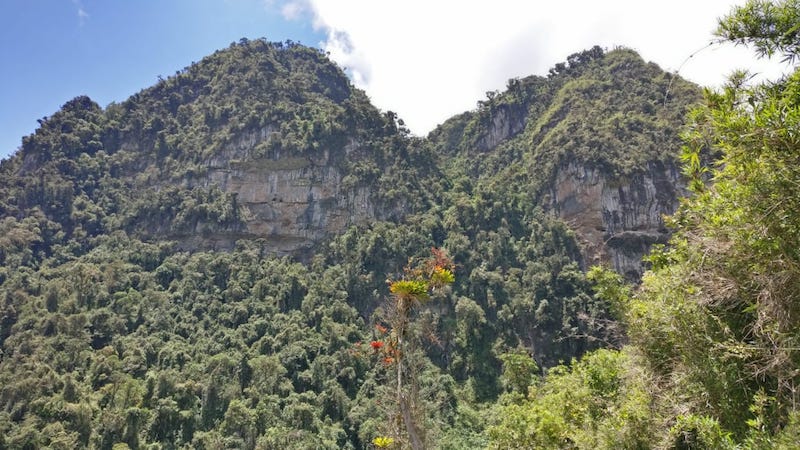A guide to el tigre sarcophagi
A key - and spectacular - feature of the mysterious Chachapoya culture is the way in which they mummified their dead. Not only did they create ornate tombs, usually in the form of sarcophagi, but they also located them in seemingly impossible locations, in the sides of cliffs, overlooking valleys and lakes.
Sarcophagi at El Tigre.
A recent addition to the growing list of these stunning funerary places are the sarcophagi - or purunmachu, as they are called locally - at Cerro El Tigre (The Tiger Mountain), near the village of San Jeronimo.
These were spotted, with the aid of a high-powered camera, in a cliff wall, at an altitude of 2,800 m (9,000 ft), in July 2013. It was then kept secret, to prevent the site being pillaged by huaqueros (grave-robbers) before it could be studied and preserved.
Skull & bone remnants at El Tigre.
The Tigre sarcophagi consist of upright, clay coffins, in a human shape, and painted with faces and jewellery.
They stand just 70 cm (28 inches) tall, leading archaeologists to theorise that they were designed for the corpses of children.
They are part of a larger archaeological site that includes the ruins of old houses; other, more conventional tombs; and caves containing human remains.
Like so much of the archaeology in Northern Peru, and especially that related to the Chachapoya culture, much more investigation is needed in order to understand the significance of the Tigre site.
How to visit Cerro El Tigre:
Beautiful & imposing Cerro El Tigre.
Relatively few people make the trip to El Tigre Sarcophagi, owing not only to the recentness of the discovery, but also to the fact that it is a strenuous hike from the village of San Jeronimo, where the road ends.
The distance covered on foot is only 5km (3 miles), but in that time one ascends some 700m (3,000ft) in elevation through cloud forest.
There is almost no public transport to San Jeronimo, but we can arrange a private vehicle and guide for you, if staying in the Chachapoyas region. The drive from Gocta Andes Lodge, across the Utcubamba River, to San Jeronimo takes roughly 45 minutes.
A visit to El Tigre is included in our 7-day Hidden Chachapoyas itinerary, which focuses on the lesser-known treasures of the region.
What our clients say about El Tigre Sarcophagi:
“The hike to San Jeronimo was challenging in the mud but worthwhile.
The local guide was an energetic young man & we enjoyed his company.”
“El Tigre Sarcophagi surprised me as I thought I wouldn’t enjoy it ... but the trip was really worth the effort.”
“Tigre sarcophagi were stunning and the walk to them our first real experience of cloud forest proper. ”
“Second favourite highlight for me goes to the El Tigre Sarcophagi partly because they aren’t visited very often and partly because of the effort required to get there and the stunning location”




